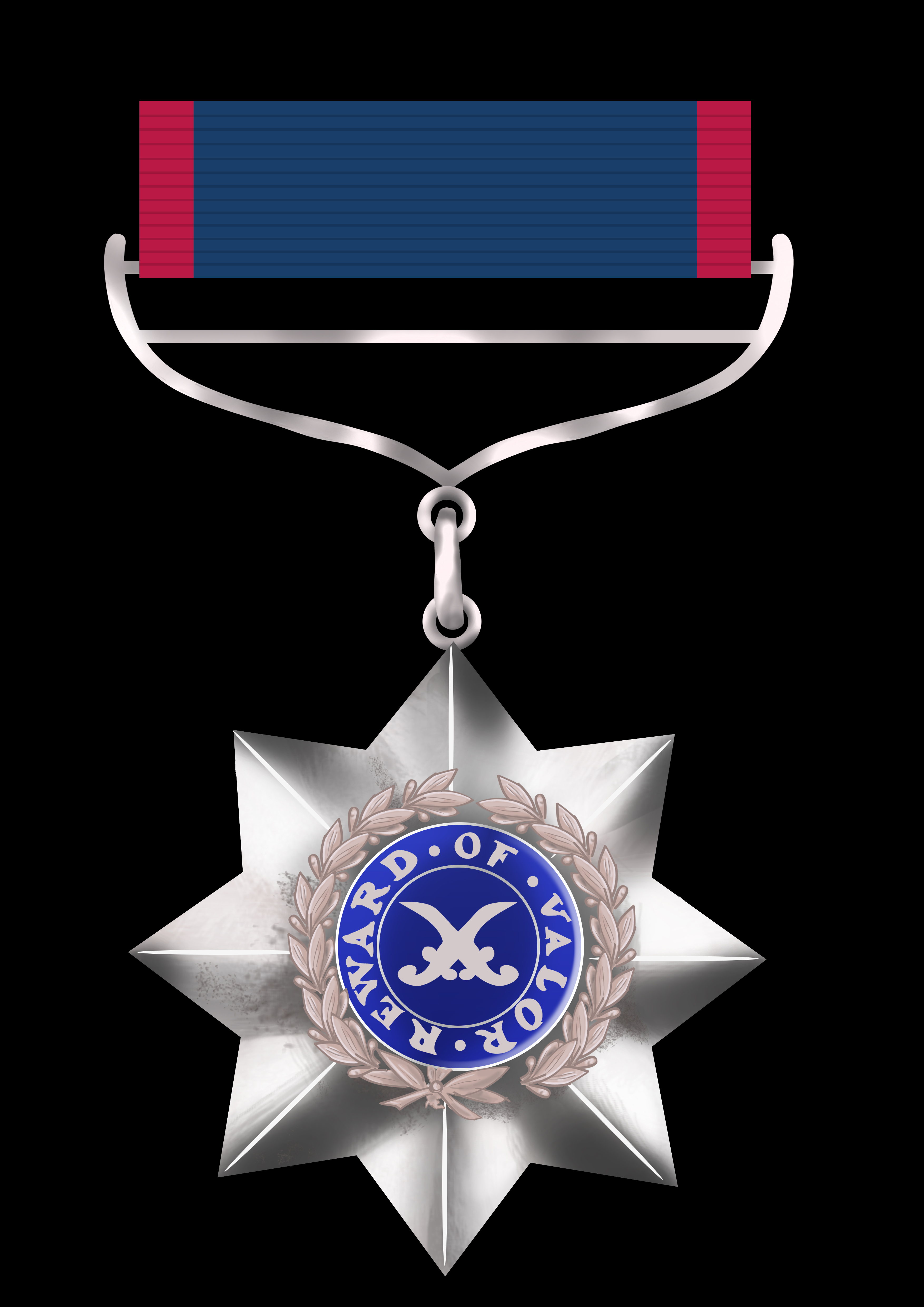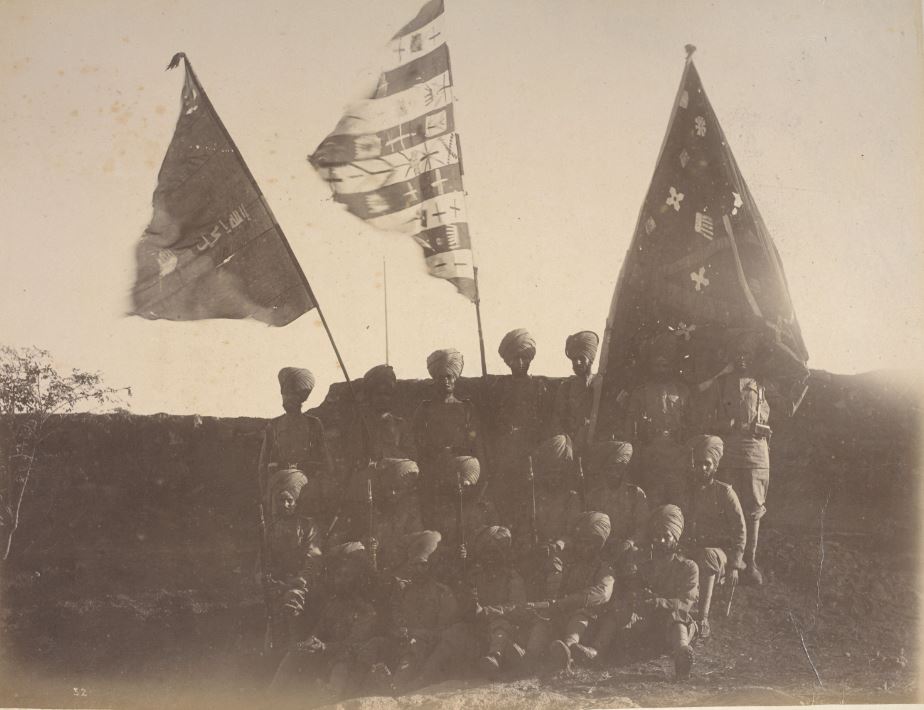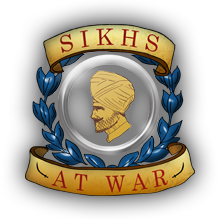Saragarhi and the Indian Order of Merit – Clarification
 This blog post serves to act as a clarification on the issue of whether the 21 Sikhs at Saragarhi were actually awarded the Indian Order of Merit (IOM), at the time in 1897 the highest award of gallantry available to native Indians (the Victoria Cross legibility changed in 1911).
This blog post serves to act as a clarification on the issue of whether the 21 Sikhs at Saragarhi were actually awarded the Indian Order of Merit (IOM), at the time in 1897 the highest award of gallantry available to native Indians (the Victoria Cross legibility changed in 1911).
The Sikh Regiment archives lend us to believe that the 21 were indeed issued the IOM 3rd class, and this has been reflected in various other writings and accounts of the battle. But having spent some time digging around at the British Library, and speaking to other experts, I can now clear up the issue.
The IOM came in three classes. The junior classes (3rd class, pictured left, and the 2nd class) were distinguished by a badge of silver while the senior class (1st) had a badge of gold. All three in the shape of a military laurelled star, bearing in its centre the inscription “Reward of Valour.”
The IOM 3rd class was “obtained by any conspicuous act of individual gallantry on the part of any native officer or soldier in the field, or in the attack or defence of fortified places, without distinction of rank or grade.” Subsequent acts of valour could result in a promotion within the order to 2nd and then 1st class.
Admission to each of the classes was “obtained upon application to the Governor-General of India in Council.” The original recommendation had to specify the act of gallantry and a representation of the circumstances made through the Commanding Officer of the regiment, by the Captain or Officer commanding the Troop or Company.
Being awarded the Order conferred a member with an additional allowance, in the 3rd class it was equal to 1/3rd of the ordinary pay of his rank, over and above that pay or the pension he may be entitled to on retirement. In the 2nd class it was equal to 2/3rds and in the 1st class it was the entirety of the amount.
In the case of the 21 at Saragarhi, the medal was not actually given to the surviving dependents of the heroes, unlike a posthumous award made today, and this is largely because when the IOM was instituted the question of posthumous awards did not arise. The concept of the Order at the time was that it was one into which a soldier was admitted while alive – he then became a member of the Order and remained thus after retirement until his death.
But Saragarhi becomes the first major incident of a mass posthumous recognition. This came in the form of the wound pension of the award being granted to descendants, along with the IOM additional allowance mentioned above which was according to their rank. At Saragarhi there was one Havildar (Ishar Singh), one Naik, one Lance Naik and 18 sepoys. And so their families would have been compensated accordingly.
The Government would also provide a monetary sum greater than the silver value of the award to the widow – the 3rd class was valued at 14 Rupees at the time. The eldest son would also automatically be offered a place by the regiment.
BUT while the IOM was thus not issued – the campaign medal was. The India Medal 1985 – 1902 was awarded for campaigns on the Punjab Frontier, Chitral, Malakand, Samana and Tirah, and has been covered in a previous post. So out there somewhere are the campaign medals for the 21 at Saragarhi – and the medal for Havildar Ishar Singh who had served on the frontier for decades could very well include some of these clasps.
 Finally, the 36th Sikhs regimental history tells us that 35 IOM 3rd class medals were awarded to soldiers of the 36th Sikhs. This was for their heroism during the defence of all the Samana forts, and is in fact the largest issue of the IOM for a single battle or action. These medals still exist in private collections.
Finally, the 36th Sikhs regimental history tells us that 35 IOM 3rd class medals were awarded to soldiers of the 36th Sikhs. This was for their heroism during the defence of all the Samana forts, and is in fact the largest issue of the IOM for a single battle or action. These medals still exist in private collections.
There are 33 Gulistan Bahadurs listed below, alongside some of their known acts of valour, of course this is a few short of the 35 mentioned. On top of that, only 30 from Gulistan received the medal, three of them (Havildar Kala Singh and two other sepoys, names unknown) were gravely wounded in their actions, and just as at Saragarhi they did not receive the medal posthumously.
The regimental history also tells us that 38 men received Mention in Despatches.
The Gulistan Bahadurs:
Havildar Kala Singh (63) – on the 13th September, he volunteered with his section of 16 men for the attack against an enemy position where standards were placed twenty yards south west of the fort. They were pinned down by enemy gunfire and had to be rescued. He later died of his wounds.
Havildar Sunder Singh (755) – along with 11 other Sikhs leapt over the walls of Gulistan without orders to help their comrades pinned down by enemy gunfire, capturing 3 enemy standards in the sortie (image above)
Lance Naik Sada Singh (807)
Lance Naik Harnam Singh (817)
Lance Nail Dewa Singh (1177)
Lance Naik Jiwan Singh (939)
Sepoy Hansa Singh (1196)
Sepoy Sundar Singh (330)
Sepoy Bhola Singh (383)
Sepoy Gurmukh Singh (1201)
Sepoy Sobha Singh (1288)
Sepoy Jiwan Singh (1354)
Sepoy Wariam Singh (1380)
Sepoy Ghulla Singh (1146)
Sepoy Kala Singh (1123)
Sepoy Attar Singh (1078)
Sepoy Sujan Singh (1046)
Sepoy Chajja Singh (1603)
Sepoy Badan Singh (1369) – charged against enemy Sangar in 1st sortie
Sepoy Phuman Singh (1597)
Sepoy Thaman Singh (1741)
Sepoy Sawan Singh (1066)
Sepoy Ghuna Singh (1600)
Sepoy Bhagwan Singh (1588)
Sepoy Harnam Singh (1589)
Sepoy Sher Singh (368)
Sepoy Ralla Singh (1632)
Sepoy Mihan Singh (1167 – attached from 5th Punjabis)
Sepoy Hira Singh (1183)
Sepoy Natha Singh (1539)
Sepoy Jawahir Singh (1338)
Sepoy Basawa Singh (907)
Sepoy Bela Singh (1295) – when the sorties arrived, two men were found to be missing, he and two others jumped the walls to rescue them
*** My thanks to Mark Higton and Tony McClenaghan for verifying information. Quoted text is from Cliff Parrett and Rana Chhina Indian Order of Merit, Historical Records 1837-1947, Volume I, 1837-1860. A forthcoming volume 2 is due to be released soon. ***


